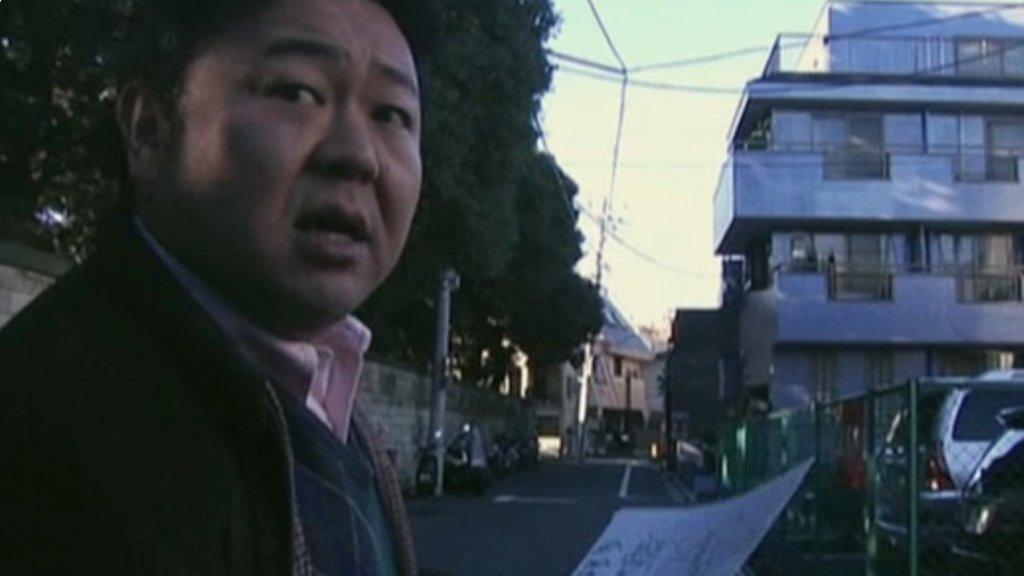Noroi: The Curse
2005

Rated: NR
Genre: Horror, Mystery, Pseudo-Documentary
Country: Japan
Run-Time: 1h 54min
Director: Koji Shiraishi
Cast
Jin Muraki………………………..Masafumi Kobayashi
Marika Matsumoto……….herself
Satoru Jitsunashi…………..Mitsuo Hori
By the time Noroi: The Curse arrived on scene, the Western world’s fascination with J-horror was starting to dwindle so the film never got the proper North American release. But truth be told, Noroi, with its complex, winding mystery, was never going to be a hit with Western audiences in the same way Ringu and Ju-On were. Its story, which involves psychics, pigeons, possession, and a few other surprises that I don’t wish to spoil, is far less accessible than that of the tale of vengeful ghosts that haunt a cursed townhouse or V/H/S tape. Yet, Noroi has still garnered considerable notoriety in the horror community after finding its way onto tons of best-of lists (best found-footage, scariest J-horror, top unseen horror gems) that came out in the decade after its release. Its reputation as being underappreciated and hard to find gave the film a cult credence. For those of us who saw it, it was our film.
More recently, there has been a renewed interest in Noroi after it found its way onto the streaming platform Shudder. Now it has, rightfully, entered the ongoing debate as to which is the scariest movie on the platform…and I get why. Though the film is almost completely devoid of jump scares, there are only a handful of films that really get under your skin the way this one does.
Noroi: The Curse is a 2005 pseudo-documentary directed by Koji Shiraishi. For those who don’t know, Shiraishi has had a long career in horror that has extended into extreme cinema and television. He is pretty much considered a horror icon in Japan and deservedly so. And Noroi is the film considered by most to be his true masterpiece.
The film follows Masafumi Kobayashi (Jin Muraki), a paranormal journalist with a fondness for video. At the onset we are told that this the last documentary before his sudden disappearance. Unlike many of his media counterparts who appear as having slightly exploitive agendas, Kobayashi’s interest in the supernatural comes from a genuine desire to understand the truth and this sincerity often gets others to be more willing to open up to him. He feels like the real deal.
Noroi starts out following three very different investigations Kobayashi was examining. The first has to do with a woman who repeatedly hears strange noises outside her window that have no visible source. His second investigation has to do with a young girl who has taken ill after demonstrating powerful psychic abilities on a television variety show. His third case involves an actress, Marika Matsumoto (playing herself), who claims to be able to see the dead. She has not quite felt the same after she agreed to follow a group of B-list comedians called the Ungirls to an area known for being a hub of supernatural activity.
Although I personally wouldn’t label Noroi a slow burn, I’ll admit that it is remarkably patient in the way it unravels. The film’s first half juxtaposes talk and variety show clips with Kobayashi’s own interviews and investigations. All slowly build towards more horrific revelations, adding increasing depth and lore to their mystery, but there is still uncertainty about how they could possibly all be connected. That is saved for the film’s second act, when the creep factor is significantly revved up once the pieces start falling into place. Shiraishi deserves credit for relying on good old-fashion storytelling instead of jump scares or elaborate effects to hold our attention. The way Noroi is crafted shows confidence. There is a realism to this world, so Kobayashi’s desire to know the truth, even as more inexplicable and potentially dangerous things starts to happen, becomes our own.
And man, does patience ever reward you in this one. One of Noroi’s best traits is that it provides attentive viewers with enough information to piece together a satisfying answer to its mystery, but it also leaves just enough uncertainty to keep you thinking about the film long after its done. And if you turn it off after the hour and forty-seven minutes mark, at that really, really short credit sequence, the film even has a much happier ending- only that’s not really the end of the film. (Remember, we are told at the start that this was Kobayashu’s last film.) Noroi has an epilogue and case could be made that these final five-minutes are amongst the best in modern horror cinema. There are so many payoffs in that final single long shot, I guarantee you will be compelled to watch it again…and again.
But as unique an experience as Noroi: The Curse is, I see the 2008 Australian film Lake Mungo as a kind of kindred spirit. Both films are pseudo-documentaries, and both often get pulled into debates surrounding what constitutes a truly scary film, mostly because of the lasting impression each has. If you are in that camp that defines scary less by jumps and more by a film’s aftertaste, which is the much more difficult feat to accomplish, then yes, Noroi is truly terrifying.
And if your still left wanting more, I strongly recommend checking out Shiraishi’s 2009 film Occult. It is Noroi‘s true spiritual successor. Like Noroi, Occult is a pseudo-documentary with another complex paranormal mystery and even more interesting characters. Just know that Occult occasionally drops the ball in the effects department…which ironically also adds to its charm. Still, Noroi is far better at being the kind of immersive experience that this style of filmmaking requires if it is to be at its most effective. (Some people even believe that all four of Shiraishi’s psuedo-documentaries- Cult, and A Record of Sweet Murder being the other two- make up a kind of shared universe.)
However, I should warn that Noroi is structured in a way that demands a viewer’s attention. In fact, understanding everything may require a second viewing. This is terror by connect the dots, and some of those scares, like “ectoplasmic worms”, will remain unseen unless you are willing to fully participate.
What Noroi lacks in flash and polish it makes up for in innovation. There are a lot of found footage horror films, but not that many are pseudo-documentaries. Budding horror writer’s should take note. There seems to be a lot of untapped potential in the mode of horror Noroi has to offer. In fact, I would not be surprised if somewhere down the line Noroi gets credited for being ahead of its time after a new horror wave shifts the traditional paradigm. This film is an experience.
Have fun watching this one!
